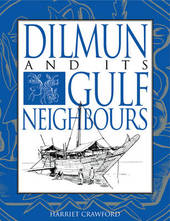
|
Dilmun and its Gulf Neighbours
Paperback / softback
Main Details
| Title |
Dilmun and its Gulf Neighbours
|
| Authors and Contributors |
By (author) Harriet E. W. Crawford
|
| Physical Properties |
| Format:Paperback / softback | | Pages:188 | | Dimensions(mm): Height 246,Width 189 |
|
| Category/Genre | World history - BCE to c 500 CE
Archaeology by period and region |
|---|
| ISBN/Barcode |
9780521586795
|
| Classifications | Dewey:939.4 |
|---|
| Audience | | Tertiary Education (US: College) | | Professional & Vocational | |
|---|
| Illustrations |
5 Maps; 49 Line drawings, unspecified
|
|
Publishing Details |
| Publisher |
Cambridge University Press
|
| Imprint |
Cambridge University Press
|
| Publication Date |
12 March 1998 |
| Publication Country |
United Kingdom
|
Description
Harriet Crawford presents a scholarly and up-to-date account of the archaeology of the Arabian Gulf from c. 4500-1500 BC. It offers a new interpretation of the structure of society in the Early Dilmun period (c. 2000-1500 BC) using material from the recently excavated site of Saar on the main Bahrain island. The urban, centralized and probably literate society in Dilmun is contrasted with the contemporary societies in Oman and the Emirates. Here there is evidence from buildings and graves for a loosely knit, apparently tribal society. Both societies were greatly influenced by their participation in the complex trade routes which linked them with ancient Mesopotamia to the north and the Indus Valley to the south east, but developed their own distinctive cultures. The reason for their divergent development seems to relate to the fact that Dilmun was an entrepot, while the Oman peninsula was a source of raw materials.
Reviews'Crawford's survey is pioneering.' The Times Higher Supplement 'Like her previous Sumer and the Sumerians (CUP, 1991), Crawford's new book is above all directly intended for a student public that she knows well; many who are not specialists in this topic will commend her for it. Even more importantly, both the thorough updating of all the available information and the richness of her remarks and working hypothesis have resulted in a very stimulating contribution for her own colleagues in the field. American Journal of Archaeology
|